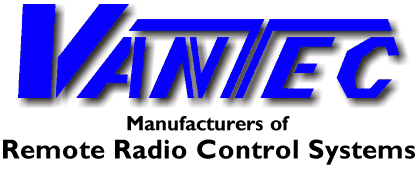| They may also be configured without mixing to be two independent speed controls. This lets you control your vehicle with two joysticks, one for each motor, and perform the turning algorithm with your thumbs. The RDFR is the only controller that gives you your choice of steering methods. Yet another configuration provides a dual output controller with a single switchable command. RDFR DIRECTORs are compatible with most model R/C systems including PCM or FM and plug into your receiver like a servo. They're available with Futaba J or G, Airtronics, Deans, or JR connectors; please specify when ordering. The RDFR family replaces our older DFRM type.
Inside an RDFR are two rugged forward/reverse speed controls coupled together through special logic that generates the differential right and left motor rotation needed to guide the vehicle. The logic also validates the R/C signals. If they are out of tolerance the last known good command is used. However, a majority of faulty signals safely shuts the motors off. The RDFR DIRECTOR is designed without relays for professional applications requiring repetitive forward to reverse commands.
The optically isolated outputs are Pulse Width Modulated full H-bridge circuits originally designed for Permanent Magnet DC wheel chair motors. N-channel power MOSFETs are paralleled in each H-bridge leg to achieve the specified amperage. For example: the RDFR38 contains 48 70 Amp MOSFETs. In contrast to hobby controllers VANTEC's MOSFETs are all properly thermally mounted flat to the metal heat dissapating case with special insulating washers.
The driver PWModulates the bottom half of the bridge while holding the diagonal upper bridge leg on in order to effect efficient re-circulating currents in the motor.
Sequenced electro-dynamic braking shunts the motor by modulating both top legs of the bridge. With a command to "stop" the brake is gently ramped from 0 to 100% duty cycle. When an R/C command that changes direction is received the brake is quickly sequenced to first bring the motor to a halt, then the reversing PWM power is ramped up to the commanded speed. This forced sequencing minimizes motor "plugging" and stress on mechanical components. The implementation and timing of these functions is user selectable.
Output current through the MOSFETransistors may compression limited above a threshhold by PWM duty cycle limiting in RDFR21-23 models. There's a threshhold adjustment trimpot for each output. Some short circuit protection is provided. |
